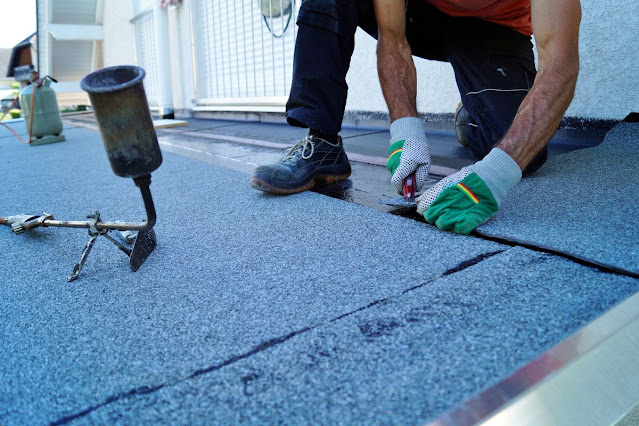The Ultimate Guide to Roof Insulation: Benefits, Types, and Installation
Understanding the Importance of Roof Insulation
Roof insulation is one of the most effective ways to improve energy efficiency, regulate indoor temperatures, and reduce utility bills. Proper insulation acts as a barrier to heat loss in the winter and heat gain in the summer, making your home or commercial building more comfortable year-round.
In this guide, we’ll delve into the key benefits of roof insulation, explore the different types available, and provide essential tips for choosing and installing the right insulation for your needs.
Benefits of Roof Insulation
1. Energy Efficiency and Cost Savings
Insulating your roof significantly reduces the amount of energy required to heat or cool your space. By preventing heat transfer, your HVAC system works less, lowering your energy consumption and utility bills. Homes with proper insulation can save up to 20% on annual energy costs.
2. Enhanced Indoor Comfort
With roof insulation, indoor temperatures remain more stable, eliminating hot or cold spots. Whether it’s sweltering outside or freezing, insulation helps maintain a consistent indoor environment.
3. Environmental Benefits
Reducing energy consumption also minimizes your carbon footprint. By investing in roof insulation, you contribute to environmental sustainability and reduce greenhouse gas emissions.
4. Noise Reduction
Certain types of roof insulation, like spray foam and rigid boards, offer soundproofing benefits. This is especially useful if you live near busy streets or under flight paths.
5. Increased Property Value
A well-insulated roof not only lowers operational costs but also enhances the overall market value of your property. Buyers and tenants often prioritize energy-efficient buildings.
Types of Roof Insulation
There are several types of roof insulation materials, each with unique features and benefits. Here’s an overview:
1. Batt Insulation
Material: Typically made of fiberglass or mineral wool.
Best For: Pitched roofs in residential properties.
Advantages: Easy to install, cost-effective, and widely available.
Drawbacks: Susceptible to moisture if not properly sealed.
2. Spray Foam Insulation
Material: Polyurethane foam applied as a liquid and expands into a solid.
Best For: Flat roofs or irregularly shaped areas.
Advantages: Excellent air sealing and thermal resistance; also provides moisture control.
Drawbacks: Higher upfront cost compared to other types.
3. Rigid Foam Boards
Material: Polystyrene, polyisocyanurate, or polyurethane.
Best For: Commercial buildings or roofs with little slope.
Advantages: High R-value (thermal resistance), durable, and resistant to moisture.
Drawbacks: More labor-intensive to install.
4. Loose-Fill Insulation
Material: Cellulose, fiberglass, or mineral wool.
Best For: Attics and hard-to-reach spaces.
Advantages: Flexible application, good for irregularly shaped areas.
Drawbacks: Can settle over time, reducing its effectiveness.
5. Reflective Insulation
Material: Aluminum foil, often combined with foam or plastic.
Best For: Hot climates where heat reduction is a priority.
Advantages: Reflects radiant heat, reducing cooling costs.
Drawbacks: Limited effectiveness in cold climates.
Choosing the Right Roof Insulation
1. Climate Considerations
The ideal insulation depends on your local climate. For colder regions, focus on high R-value materials to retain heat. In warmer areas, reflective insulation or materials designed to minimize heat gain are preferable.
2. Roof Type
Your roof’s structure—flat, pitched, or irregular—influences the insulation choice. Spray foam and loose-fill are versatile options for complex shapes, while batt or rigid boards work well for straightforward designs.
3. Budget Constraints
While some insulation types, like spray foam, have a higher upfront cost, they offer long-term savings through better efficiency. Assess your budget and weigh initial investment against future energy savings.
4. Moisture Resistance
If your roof is prone to leaks or condensation, choose moisture-resistant materials like rigid foam or spray foam. This prevents mold growth and insulation degradation.
Installation Process
1. Preparation
Before installation, inspect your roof for damage, leaks, or existing insulation that needs removal. Repair any issues to ensure the new insulation performs effectively.
2. Choosing a Professional Installer
While some insulation types, like batts, can be installed by DIY enthusiasts, others require professional expertise. Spray foam, for instance, demands specialized equipment and techniques.
3. Layering Insulation
For optimal performance, consider a layered approach. Combining different types of insulation, such as spray foam and reflective materials, can maximize thermal resistance and efficiency.
4. Ensuring Ventilation
Proper ventilation is essential to prevent moisture buildup. Ensure your attic or roof design includes vents to maintain airflow and extend the lifespan of the insulation.
Maintaining Roof Insulation
1. Regular Inspections
Periodically check your roof insulation for signs of wear, moisture damage, or pests. Addressing issues early prevents costly repairs.
2. Seal Air Leaks
Over time, small gaps may develop around vents, chimneys, or other roof penetrations. Reseal these areas to maintain the insulation’s effectiveness.
3. Upgrade When Needed
If your insulation is outdated or underperforming, consider upgrading to modern materials with higher R-values. Newer options often offer better efficiency and durability.
Conclusion
Investing in roof insulation is a smart decision that benefits both your wallet and the environment. By understanding the types, benefits, and installation processes, you can choose the best solution for your needs. Whether you’re building a new home, renovating, or looking to improve energy efficiency, roof insulation is a key component of a sustainable and comfortable space.
If you’re unsure about the right insulation for your roof, consult a professional installer to assess your property and recommend the best options. With proper insulation, you’ll enjoy enhanced comfort, lower energy bills, and a more eco-friendly home for years to come.
.jpg)


Comments
Post a Comment